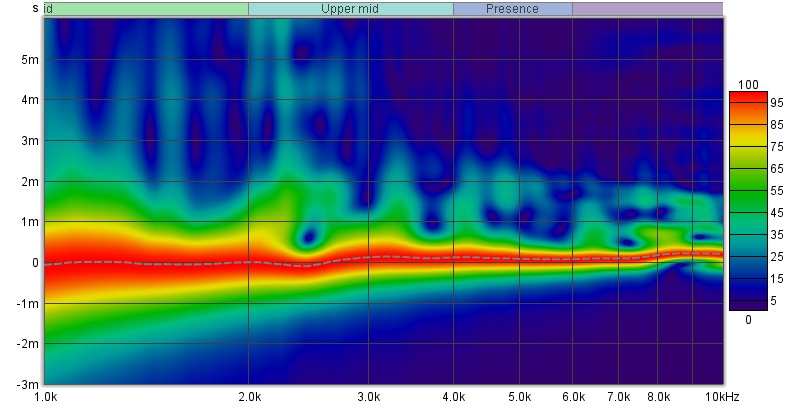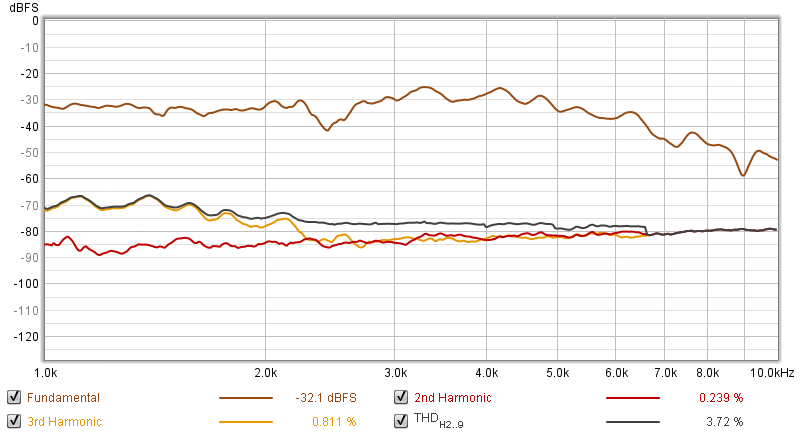|
Dayton MB1025-8 Frequency Response (manufacturer) The plot above is from Dayton’s datasheet. It shows the MB1025-8 is good to about 2.5kHz, beyond which she suffers from cone breakup.
Fig 1 is my measurement of the MB1025-8 in a 27 liters sealed box that I used in the Osprey-II. Most noticeable in the plot is a sharp notch at 2.5kHz. This is absent in the manufacturer’s plot. The series of spikes after that are from the cone breakup.
The Waterfall plot (Fig 2) recorded a strong decay at 4kHz. These are the artifacts not seen in the frequency response.
The huge bunch of light blue slices (Fig 3) are the artifacts when they are referenced to cycles in the z-axis. They start from 2kHz and extend to 10kHz, basically where the cone breakup occurs.
The Spectrogram in Fig 4 provides a better view of the strength of the cone breakup. The green fumes rising from 2.5kHz all the way to 10kHz are the artifacts seen in 2D. Fortunately, the cone breakup energy is dissipated by 3msec. They will not affect the sound quality as the timeframe is too short. The sharp notch at 2.5kHz is clearly visible. On either side of it we can see the cone flexing. It appears it’s something mechanical that cause the cone to “ring” at this juncture, thus extending the bandwidth to 5kHz in the process.
The Step response (Fig 5) shows the “slowness” of a 10″ woofer. When compared to a smaller 3″ driver like the Dayton PC83-8, the difference in transient is apparent. After the main peak, there is another in the trailing edge. I guess this is where the frequency bandwidth extension occurs.
The Harmonic Distortion in Fig 6 recorded rather high THD. I wouldn’t be too concerned about this. Most of it is caused by the cone breakup. The THD will be much lower when I cross this woofer at 2kHz with the low pass filter. Summary I listened to this MB1025-8 without any filters for a few days and was pleasantly surprised the cone breakup did not present any issues. There wasn’t any harshness that one typically finds in a cone breakup. No brittleness too. I was so impressed that I can recommend the MB1025-8 for voice reinforcement. There is some boxiness in the vocals but it is not over-powering. If one is fussy about it, it can be easily EQed away. What is more important is there are no screeching female voices. Sibilance is well controlled too. One other surprise is the bass. I didn’t expect much from a sealed box but it’s there and frankly, the bass sounded quite good. What this means is I can actually use this MB1025-8 with a horn and have them in a compact 27 liters sealed box. This is perfect for a satellite. For bass, simply add a subwoofer. Another option is to load her in a bass reflex of 35 liters tuned to 50Hz. This will give an F3 of 50Hz, just right for music. A bass reflex such as this is great as a general purpose 10″ 2-way. She can be used for music as well as for voice reinforcement. My next step is to find a suitable horn to mate with this MB1025-8. I think she’ll make a wonderful high-powered 2-way. Unless otherwise stated, all measurements were made in Full Space (4 pi) with the mic at 36 ins, tweeter axis. Impulse Window=5ms. No smoothing applied. |

September 5, 2023PRO DRIVERS
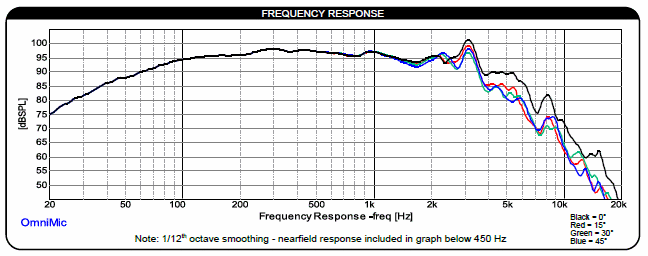
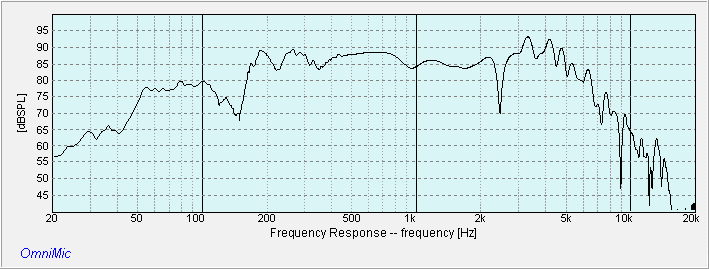 Fig 1 – MB1025-8 Frq Response • Baffle Width = 14″
Fig 1 – MB1025-8 Frq Response • Baffle Width = 14″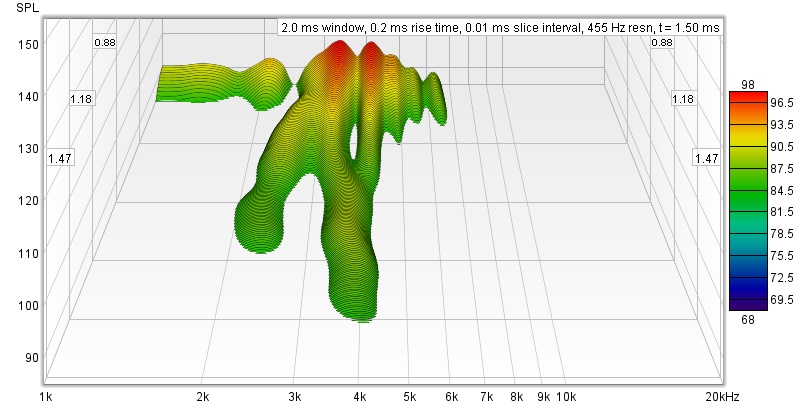 Fig 2 – MB1025-8 Waterfall
Fig 2 – MB1025-8 Waterfall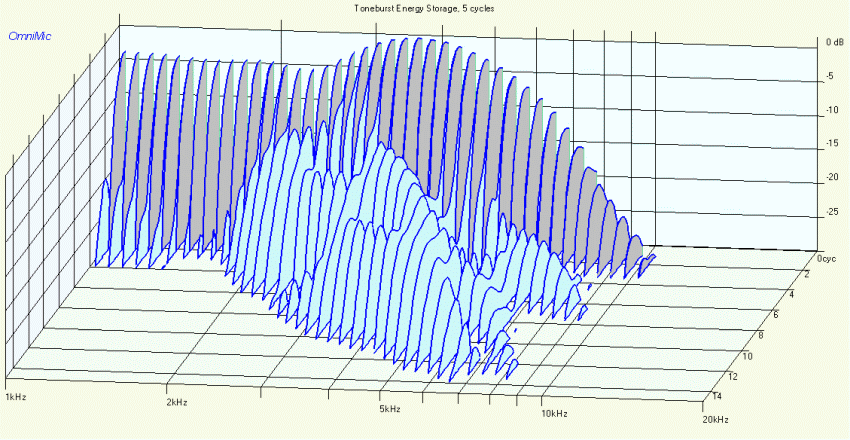 Fig 3 – MB1025-8 Toneburst Energy Storage
Fig 3 – MB1025-8 Toneburst Energy Storage